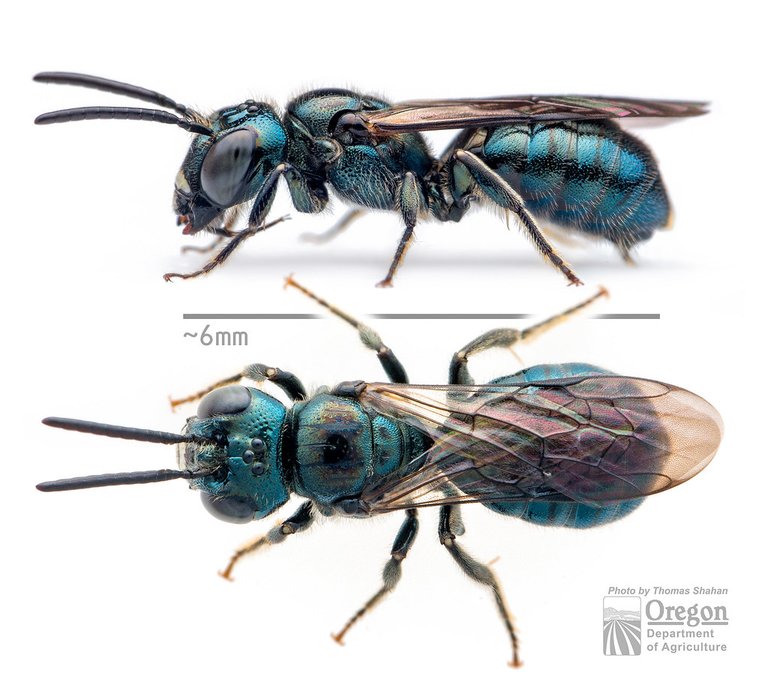Small Carpenter Bee - The Non-Social Bee Species
Last time, i talked about the Honeybee looking at how they live for the colony and die for the same colony and I must say that it is a lot but honey bees just like a lot of other animals are social animals but today, I will be looking at another type of bee that is in the same family as honeybees but doesn’t live in colony of workers and queen bees and I am talking about Ceratina calcarata also know as the Small Carpenter Bee.
A solitary organism is one that lives alone and only comes together to interact for the purpose of mating. For animals that have mother care, they are subsocial. Some animals can be communual, Quasisocial, Semisocial, and Eusocial. Eusocial organisms have a dominant reproductive caste, and non-reproductive caste as well. The non-reproductive caste have to xare for the reproductive ones and milultiple generations can live together. This type of social class is one found with honeybees.
https://upload.wikimedia.org/wikipedia/commons/0/0a/Small_carpenter_bee.Ceratina_cucurbitina_male%2832479070282%29.jpg
https://commons.wikimedia.org/wiki
Having a bluish green or black color with a length of about 8 millimeters long at max length, the small carpenter bee lives in broken stems with soft pitchy centers where they burrow into. This burrowed hole serves as a home and where females can make tube-shaped nest after mating that she fills with pollens containing egg. When the egg hatches into a larva, the pollen serves as food for the larva so the larva eats the entire pollen till it reaches pupa after which it undergoes metamorphosis and reaches its adult stage. This entire process takes 6 weeks and at this stage, the mother keeps feeding them until they are matured enough to go out and start their own life.
Bees are haplodiploid animals which means their offspring can be either haploid with the mother’s chromosome alone or diploid when the sperm is added to it. In organisms of Hymenoptera the haploid diploid chromosome thing can be used to identify the sex of the offspring where males are haploids and females are diploids.
With this, the female can decide which of her offsprings will be male or females where the unfertilize eggs are males and the fertilized ones are females. The mother bee will intentionally lay her first egg to be fertilized and give little pollen so it will be female and smaller than the mother so it can help raise the other offspring.
About 20 thousand species of bees are solitary organisms and there are a lot of bees that cut through different social categories that were designed for them basically. For the carpenter bees, they are a subsocial animal but also make their first female offspring a de facto worker bee since it helps in caring for the other offsprings without having any offspring of hers which puts this bee in a different social category.
Read More
- https://www.annualreviews.org/content/journals/10.1146/annurev-ento-010715-023711
- https://bugguide.net/node/view/3508
- https://www.discoverlife.org/mp/20q?search=Ceratina
- https://www.cell.com/current-biology/fulltext/S0960-9822(23)00912-0
- https://extension.entm.purdue.edu/publications/E-252/E-252.html
- https://link.springer.com/article/10.1007/s13592-015-0402-x
- https://www.honeybeesuite.com/the-spectrum-of-bee-sociality/
- http://www.rehanlab.com/uploads/2/1/4/3/21434988
- https://link.springer.com/article/10.1007/s00265-016-2194-z
- https://journals.biologists.com/jeb/article/220/23/4456/33702

Thanks for your contribution to the STEMsocial community. Feel free to join us on discord to get to know the rest of us!
Please consider delegating to the @stemsocial account (85% of the curation rewards are returned).
Consider setting @stemsocial as a beneficiary of this post's rewards if you would like to support the community and contribute to its mission of promoting science and education on Hive.
I love this